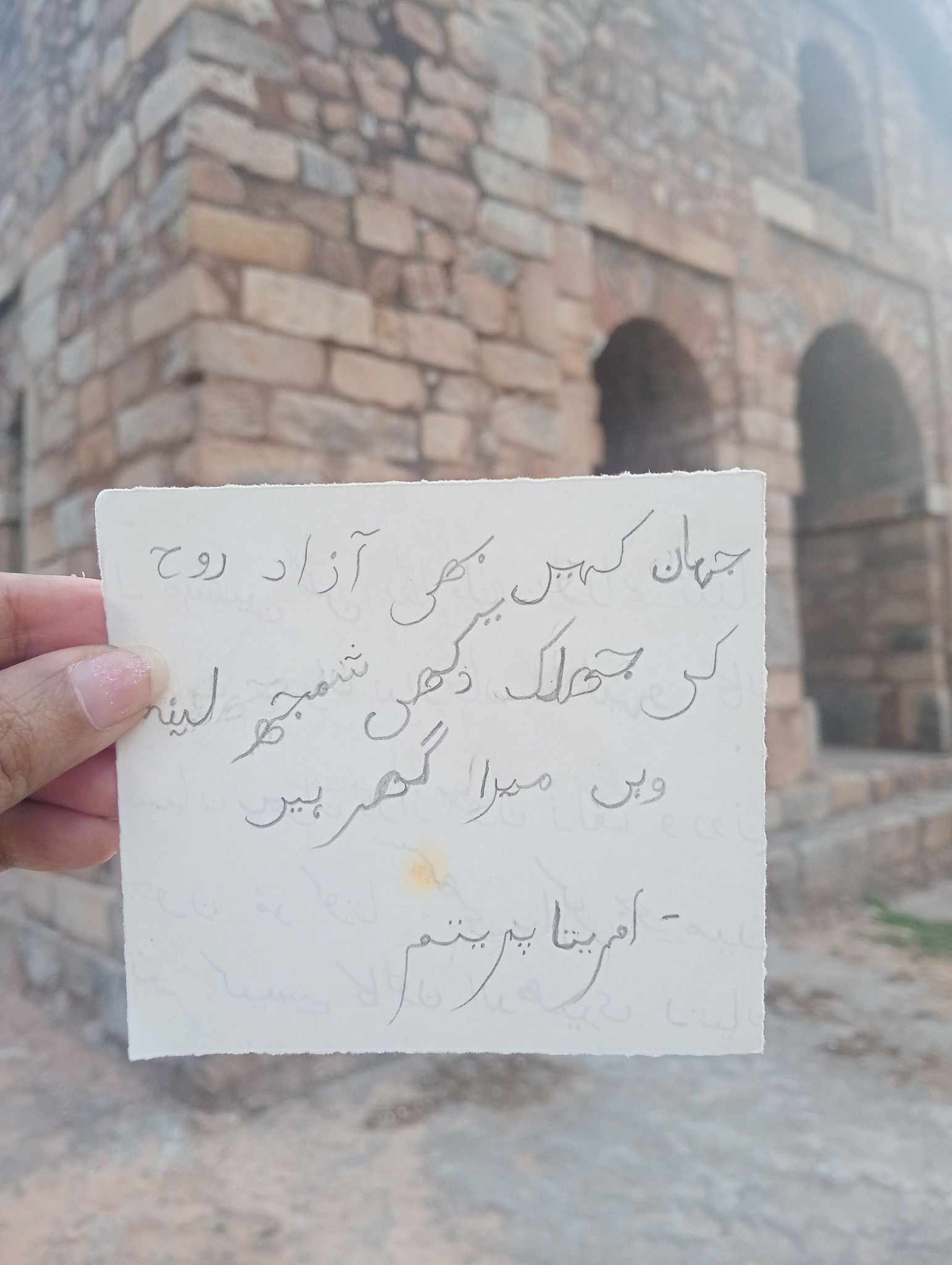
That’s me sailing on a boat on the Ganga. I was in Varanasi for a couple of days. This was a history walk and boat ride on the Ganges. Our guide, Saurav, kept telling stories as we sat, watching this ancient river flow. I’ve explored many cities in India, but Varanasi was different. As you pass through the 84 ghats by the river, it’s serene to see an almost 6,000-year-old city glide by—like time itself. That’s when death first peeks at you. Manikarnika Ghat burns ablaze; it always does. They say, “Iski mitti kabhi thandi nahi hoti”—its soil never cools. People come to die in Varanasi, to be cremated here, believing it grants Moksha. Is Moksha that easy? I wonder. I wonder how death feels when you see it so close every day. I asked my Rapido driver how death feels to him in Varanasi, where people come to die. He said, “Sabke ghar mein aayega, dar nahi lagta. Ghat mein roz laash jalti rehti hai. Meri bhi jalegi, ek din.”—It’ll come to everyone’s home; I’m not afraid. Corpses burn on the ghat every day. Mine will too, one day.
I thought about the core of Hindu philosophy—Karma and Moksha—and how death is just a moment when the soul changes its clothes. I thought of Masaan Holi, where people play Holi with ashes, and where Lord Shiva himself dances: “Digamber Khele Masan mein Holi.” Death feels like a play. Death feels at ease on these ancient ghats of Varanasi.
Then I spent an afternoon at Sarnath. Buddha chose Varanasi to deliver his first sermon after attaining enlightenment, sharing it with his first five disciples. So, technically, Buddhism took root in this ancient city. You see the Bodhi tree. You see his teachings. I’ve always loved Buddha—he always said to think through his words before following him. Nothing was forced. Buddha could be questioned. What a man!
Next, I drove to Banaras Hindu University, also by the Ganges—the most beautiful campus I’ve ever seen. I looked at the statue of Madan Mohan Malviya and was in awe of the vision he had a century ago. Men like him, whose foresight literally built this country.
Then I went to Kashi Vishwanath. I cried during the Darshan, though I’m not sure why. I visited Bhairav Mandir and so many others. Walking through the narrow lanes of Varanasi is a unique experience—chaotic, but not frightening. You don’t fear the crowd; you know you’ll emerge safe. I did.
I saw a slow city. People were helpful. You feel safe—no groping or harassment. Coming from Delhi, where you’re always hyper-vigilant, this was striking. I didn’t hear abuses. The cab drivers and bike riders spoke to you. They took me to places I didn’t even know existed. I left my phone and purse with my Rapido driver while I went to the temple, and they came back safe. That’s my experience in Varanasi.
This city is like an old friend, an old teacher—having seen too much, knowing too much. At its heart flows a river where people’s ashes are surrendered. On its ghats, Shiva dances with death. At Sarnath, Buddha delivers his first sermon. And on the other side of the city, Kabir rebels against the system and writes dohas we still sing. Yet everyone coexists. The city thrives.
I visited the weavers of Varanasi, who craft the finest silk. One saree takes three weeks to weave—it’s like meditation. The weaver can’t think of anything but the threads; a single mistake, and the saree is ruined. So many of Kabir’s dohas revolve around weaving.
Ramnagar Fort, also by the Ganges, is another marvel. Sitting at the top, you feel the river bathe you. It’s soothing. What a privilege those evenings must have been a century ago if you lived there.
The morning and evening Aartis make the Ganges look like a goddess. The whole city is built around her. I wonder if the city was built around her or for her. I asked the Ganges. She smiled but didn’t reply.
As I prepared to return to Delhi, I walked to the ghats again. The feminist in me rejoiced as they chanted, “Parvati Pate, Har Har Mahadev.” Shiva—known as Kala Bhairav, the one who dances with death—chooses to be identified by his wife. What a man! What confidence he has—so much to learn from him: humility, grace, power, and the ease with which he wields it.
I returned to Manikarnika. I saw pyres blazing and more bodies waiting to burn. But it felt okay—that this is okay, that everything will pass. You can dance through death, and you’ll be fine. Death felt easy and acceptable. Because, in the end, “Digamber Khele Masan mein Holi.” Varanasi is where death is just a passing ritual, where even God plays Holi with it.
I’ll come again. I want to be a student once more. Teach me as I age—why does Shiva dance with death? What’s the purpose of life, if there is one? I know you know. You’ll be my last teacher.
I promise. Until next time.
If my work has made an impact on you, you can buy me a coffee here. This will help me to keep writing and healing more. Thank you.











![A Strange Friendship [#AVeryShortStory]](https://sk0.blr1.cdn.digitaloceanspaces.com/sites/5572/posts/492442/teachernkio.jpg)








Write a comment ...